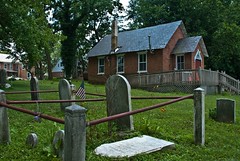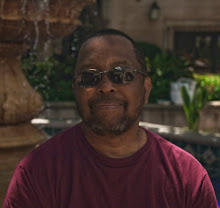In 1843, life in the United States of America was a precarious one for African Americans. The Fugitive Slave Act of 1793, was a federal law that required the return of runaway slaves to their masters. In actuality it was rarely enforced but it led to a tenuous hold on freedom for African Americans who were not slaves.
In the 18th and 19th centuries the hold African Americans had on freedom was even more slippery. Slavery from birth until death was the fate that awaited most Africans in America and the few freedmen were always under the threat of having their rights and freedoms taken away.
Religion and the church was one of the few places an African could escape to in order to get any peace of mind. Barred from the religions of their ancestors by American society in general, and slave owners in particular, Africans adopted the Christian religion of their oppressors in great numbers.
In rural Chester County, Pennsylvania, Hosanna Meeting House served as the center of religious and spiritual life for the African Americans in the all black community of Hinsonville. Built in 1843 by the residents of Hinsonville, Hosanna was not only a house of worship but a political meeting place, an education center, and a stop on the Underground Railroad. During its 165 year existence Hosanna has been affiliated with the African Methodist Episcopal Church (AME), the African United Methodist Protestant (AUMP) church, and the African Methodist Episcopal Zion (AMEZ) church.
Many of the founders of Hosanna Meeting House and the village of Hinsonville are buried in the cemetery on the grounds of the church. The headstones read like a Who’s Who of 18th and 19th century African American Chester County. There are generation of families such as the Amos family, the Drapers, Walls, and Coles. Two of Hosanna’s members, Wesley and William Jay, served with the 54th Massachusetts Colored Infantry in the War Between the States and are buried in the cemetery at Hosanna. In 1864 Sojourner Truth and Frederick Douglass came to Hosanna Meeting House and gave speeches in support of the Union. Something said in those speeches inspired my great-great grandfather, William Henry Black, and his brothers Joseph, Israel, and Ellis to join the Union army in time to participate in the siege of Petersburg and Richmond.
Hinsonville is long gone, relegated to the pages of history. It was replaced by Lincoln University, reportedly the oldest African American college in the United States. Hosanna Meeting House however, is still standing tall. It has been honored by the state of Pennsylvania as a historic site.
Click on the photograph and please enjoy your online visit to Hosanna Meeting House.
holiday gifts
8 years ago






3 comments:
Congratulations Barry!
Most of us don't know that much about our family's history -- Black or white.
Interestingly enough, a client whose son is a freshman at Lincoln, asked me why I thought Lincoln was planted in such an H2B (hostile to Blacks) area. Thanks for providing an answer.
nitra
Thanks for your efforts to keep our heritage and our history alive and out front.
Barry,
It has been quite a journey, and it is good to see the fruits of your labor. I have a radio show and will be mentioning Hinsonville, as a free black community. Check me out, http://blogtalkradio.com/Anita-Wills.
Anita
Post a Comment